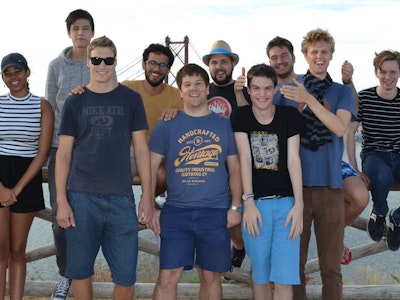How do you structure the wages of a company? This question is central to every company and has been on our mind since Renuo got founded. This blog post describes our experiences with wages and shows how our wage model has evolved. The blog post focuses only on the underlying model and not on the effective wage amount - this again would be worth a separate entry.
A wage model is important
One of our central values value is “Fairness and Transparency”. For this reason, we believe that wages should depend on performance and not on individual negotiating skills. An objective and fair wage distribution requires a comprehensible set of rules. For this reason, we have had an actual wage model since 2016, which we disclose internally (including all salary details).
Version 1.0: Uniform wage (2011 - 2016)
When we started our company back in 2011 it was clear that we all earn the same amount: We were of the same age, had the same level of education and because of the still very small size of the company, the responsibility was distributed more or less equally. This model was a good reflection of our reality and therefore worked very well. Three years later we were allowed to hire two more developers. We retained the model so far, but set the new contracts slightly lower (-10%) (for normal employees, i.e. non-partners). This initially remained the model for the next few years (2014-2016).
For the few people we were at that time, the uniform wage was a very suitable and fair instrument. In addition – and I would also like to point this out – a standard wage is very efficient in two respects: On the one hand, you can avoid an honest (and difficult!) discussion about the wage model used. On the other hand, all wage negotiations can be dismissed by pointing out that everyone earns the same. That was never the motivation behind it, but the effect was still there. Who wants to be the only one in a company to earn more than everyone else?
With increasing company size and the associated diversity in terms of training, experience and responsibility, we noticed that this model cannot last forever. Interestingly, this occurred at a time when companies introducing “innovative” uniform wages were widely portrayed in the media (see e.g. hier). The reason for the unease is obvious: you simply don't want to pay a university graduate without work experience the same salary as a person with six years work experience. A new wage model was needed.
Version 2.0: In 7 steps from learning to teaching
At the time of the development of the wage model 2.0 we were 23 people with different backgrounds, experiences and training. We wanted to create a model that represented all constellations fairly and comprehensibly (reminder: wage transparency). The result was a matrix that classifies a person in different areas. Here we oriented ourselves to our recruitment criteria Drive, Responsibility, Social, Smart, Getting Things Done and Curiosity. The assessment was carried out annually and per employee by the management and is oriented along the axis “Knowing, Understanding, Teaching, Founding”. One person was set to a level (1-7) in each area, and the average of the individual areas resulted in the level and thus the salary amount.
The advantage of the model was that desired behaviour patterns and training levels could be communicated. For the first time something like a career path was visible. To the disadvantages: Although we didn't cut anybody's salary, there was obvious discouragement if the salary classification was below that of the person paid so far. It also turned out that the management's classifications into a level were to some extent subjective and therefore did not quite meet the criterion of objectivity. In addition, false incentives were set within the areas (attending many tech conferences, for example, led to a higher salary). There was therefore a need to simplify the rather complicated model.
Version 2.1: Novice, Journeymen and Senior
We introduced the adapted version of the wage model at the beginning of 2019. It is divided into Journeymen, Junior and Senior (interns are handled separately). The classification is based on objective criteria:
- Novice: Completed apprenticeship
- Journeyman: Completed studies
- Senior: Completed studies and 5+ years work experience; agreement of all seniors necessary (guild idea)
In addition, there are three additional components that influence wages:
- loyalty bonus (up to max. 10,000 working hours): We assume that one person will become better with each working year with us. After 5-6 years this probably decreases.
- Master bonus: We would like to specially remunerate a completed Master's degree. After all, we (and our customers) benefit from the specialized training.
- Management-Bonus: In the end, one person has overall responsibility – we would like to acknowledge this financially.
In comparison to the previous model, we deliberately omitted the criteria from the recruitment because they are actual hygiene factors: If something is not sufficiently given, this should result in dismissal.
A wage model grows with the company
A wage model cannot be copied and must be specifically adapted to the circumstances of the company. Our company size is currently relatively manageable and we have therefore had good experiences with a simple and easily understandable salary model. If we had 50+ employees, this would have to be adjusted and refined. A salary model must therefore always keep pace with the growth of a company and cannot be copied 1:1. What applies independently of a company: a clear wage model creates transparency, trust and comprehensible processes. Actually something that all companies want?





